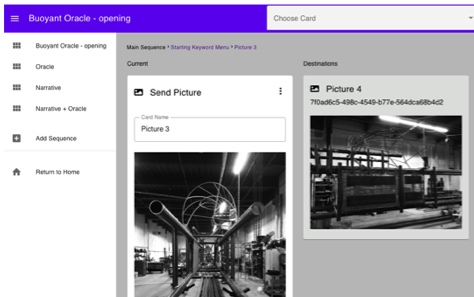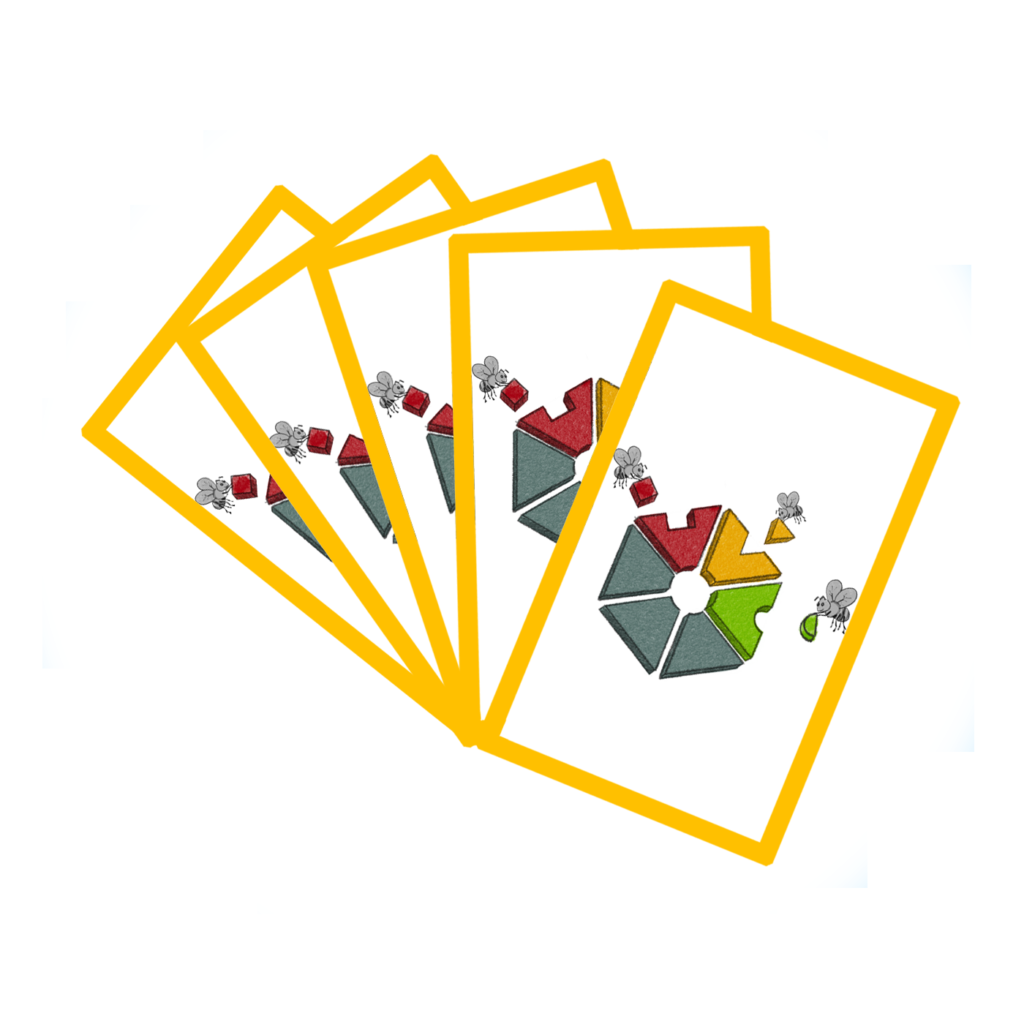
We are currently scaling Hive Mechanic to 50+ cities, thanks to the support of the IMLS (Institute of Museum and Library Services). Hive Mechanic is an authoring system for making neighborhood games and playful activities to embed in public space. No coding skills required.
Practitioner links
- See our tasting menu, plus additional case studies of successful games and interactive stories
- The tool/editor including in action
- Libraries and museums as hubs for engaging beyond our walls for workshops and game making (IMLS supported)
- Guides, tutorials and curriculum
- News/blog
- Stay in touch
How does it work? Cards and a metaphor…
Designed for non-programmers, our card system means that anyone (from librarians to community artists) can create a branching story or neighborhood treasure hunt. Paper cards are used to help newcomers conceptualize good feedback loops and create fun choices for their players. Then, in the online authoring tool, the card system allows them to easily translate their ideas into interactive experiences. Meanwhile, the Hive Mechanic server organizes the live game by coordinating players, sending text messages (with services like Twilio), checking on city data services (via API), and optionally coordinating with installations (e.g., with tiny Raspberry Pi computers embedded in physical space). While our system is designed with non-programmers in mind, advanced programmers can tap into our open-source code to create more complex playful experiences.

Our web interface for Hive Mechanic is how you create a game or activity — no special apps required. Our tool is designed to be visual and to help democratize game design. It is simpler than tools like Scratch and ARIS, with a hint of the internet of things like IFTTT.
During gameplay, players can send many kinds of information to the game server, from texting a photo to more advanced coordination with mobile apps (e.g., Unity). Meanwhile, other game “satellites” will also be contacting Hive Mechanic with timers, motion sessions, or emerging city data. The game engine can also push content to public space, such as changing a projection on a wall, playing audio through hidden speakers, or starting a video on an iPad.

Soft skills and creativity are especially important for good design. We believe they can be systematically boosted and made more accessible to non-traditional designers. We repeatedly tap into the framing and systemic power of playing cards. As a metaphor, playing cards have nearly universal legibility and can convey ideas similar to the blocks in visual programming languages. In our workshops, print versions of the cards are used before pivoting to the online interface. For game design, paper prototyping is a fundamental technique that is useful for engineers and non-technical designers alike.
This academic video (2 min) introduces how the “card metaphor” helps make Hive Mechanic easy to use. See also our paper for game scholars at the CHI PLAY conference in 2020.
Recent collaborators

Get involved (and some history)
Our raw code is freely available, and skilled developers can always branch the project for their own goals. We are also looking for collaborators in cities and communities around the world to design with us. For select projects, we host the server installation as well. Be in touch with your ideas, or just to explore!
Maker and educator guides are coming soon. Our maker guide will focus on independent learning and experimentation within the tool. Our educator guide focuses on leading sessions of students (of any age) who are creating their own activities using Hive Mechanic.
Milestones and history
• 2018: Ideation phase, thanks to seed funding from American University, including prototypes with Raspberry Pi

• 2018: Concept demonstrations with key partners (i.e., working prototypes, but with intensive coding and 3rd-party tools)
• 2019: Software development began by Audacious Software. Two technical versions tested; one was selected for our beta.
• Feb 1, 2020: Workshop at the AU Global Game Jam — the first with Hive Mechanic
• Spring 2020: Release of open-source code on GitHub
• Spring 2020: Full stack launch — first exhibits launch running the full Hive Mechanic stack
• July, 2020: Creation of the plans for the MiDI Bee Physical Installation Box
• September, 2020: Launch of “Buoyant Oracle” and “Mural, Mural on the Wall” installations for broad public use, among other working projects
• Summer, 2021: Launch of “Hard Choices” activity with DC Office of Planning, for crowds and live polling on the future of a neighborhood
• September, 2021: Major grant ($249k) from IMLS to reach 20+ cities with neighborhood game design, in partnership with the DC Public Library (“Beyond Our Walls”)

Credits
Developed in partnership with Audacious Software, the DC Public Library, the AU Humanities Truck, the AU Game Center, and the Leimert Phone Company. A project of The Playful City Lab and the AU Game Center.